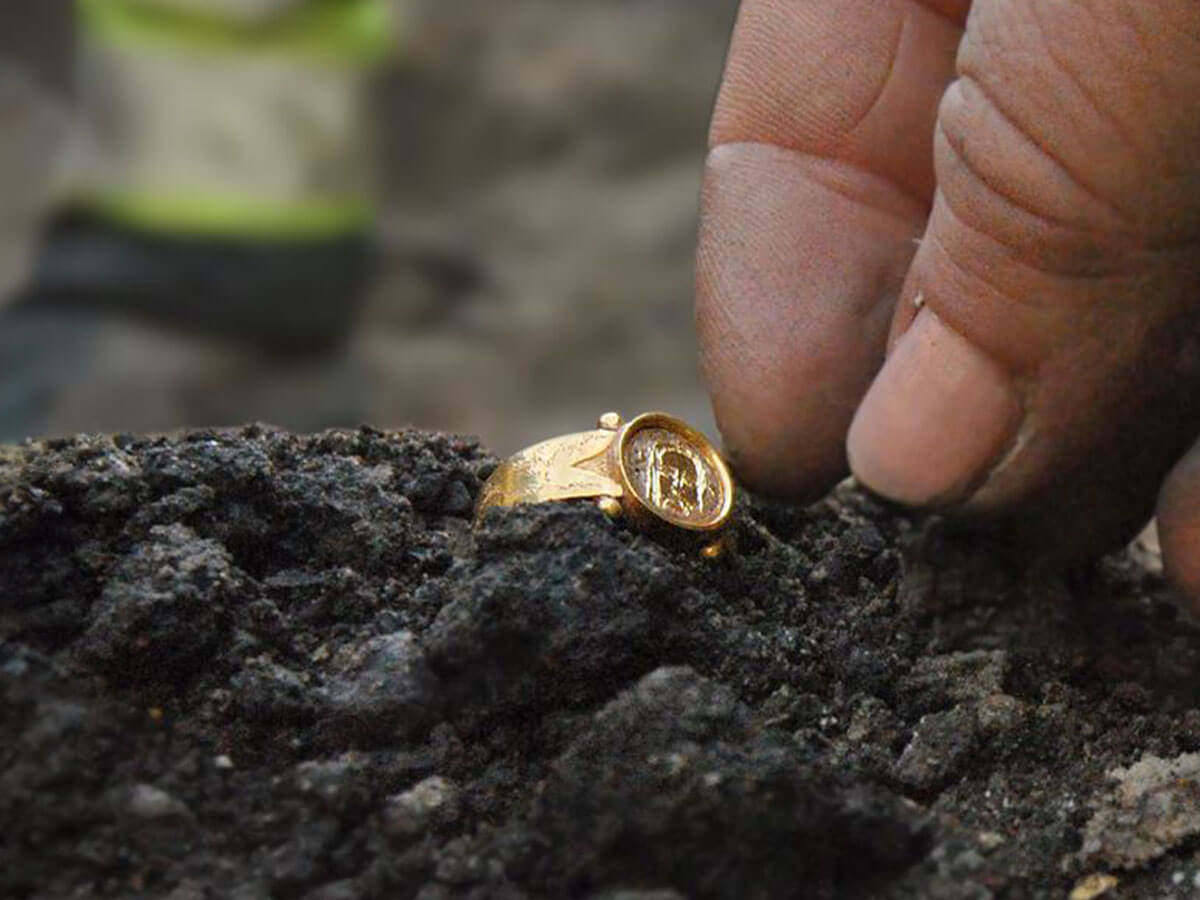
Archaeologists in Sweden have uncovered more than 30,000 items during a two-year excavation of the medieval city of Kalmar. The finds date from 1250 to 1650 AD and have included the uncovering of 50 medieval plots, streets, latrines, and numerous everyday objects. Despite the city having been destroyed in the 1600s and having experienced the ravages of the Kalmar War in 1611, many finds remain in good condition and there are still plenty of large sites yet to be excavated.
One find receiving a lot of attention is the discovery of a gold ring in nearly-new condition. The ring bears the face of Christ etched into it and was probably worn by a woman, based on its size. Researchers believe it dates to the 15th Century. Magnus Stibéus, project manager at the Archaeologists, which operates under Sweden’s National Historical Museums, suggested that based on the ring’s location, it was probably lost. “Of course, it’s great fun to find something like that,” said Stibéus. “The gold ring was in almost new condition with a Christ motif and was found, like the alsengem, in contexts that we interpreted as waste storage. Probably someone was unlucky and lost the ring 500 years ago. The alsengemet is broken and may have been thrown away.” A broken alsengem, known as a Pilgrim’s Amulet and worn for protection on the road, was also found near the ring. This particular alsengem dates to the 13th or 14th century.
There have also been signs of the war, with archaeologists uncovering cannon balls, razed buildings, and swords. “We have been able to lift the lid on the city’s Middle Ages and have had the opportunity to study how people lived, what they ate and drank and how this changed over time. Archeology becomes like a peephole into medieval history that allows us to learn more about how life was several hundred years ago,” said Stibéus. He later added that the site offers information on the lives of various medieval people and what their everyday lives were like. “The building remains and the cultural warehouses form a historical archive that holds enormous amounts of information and stories about the political and economic ambitions, everyday life and living conditions of previous generations. We get an insight into large parts of the medieval city and encounter traces of the social and economic existence of different groups; traders, craftsmen, civil servants, church people, poor and rich.” Archaeologists look forward to continuing excavations and uncovering more unique finds.
